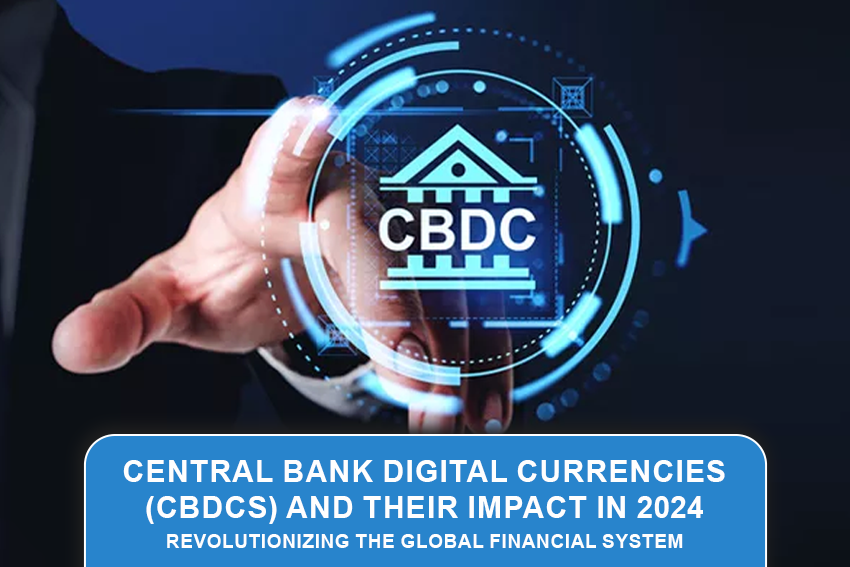
Introduction
As we advance into 2024, the financial world is witnessing a transformative era with the rise of Central Bank Digital Currencies (CBDCs). CBDCs represent a significant leap in the evolution of money, marking the intersection of traditional finance and digital innovation. This blog delves into the concept of CBDCs, examining their implementation across the globe, their impact on the financial system, and the challenges they bring.
What are CBDCs?
CBDCs are digital forms of a country’s fiat currency, issued and regulated by the nation’s central bank. Unlike cryptocurrencies, which are typically decentralized, CBDCs are centralized and backed by the government, combining the convenience and security of digital currencies with the regulated, reserved-backed money system of traditional banking.
Global Implementation of CBDCs
In 2024, several countries have either launched or are in the advanced stages of piloting CBDCs. This section can explore specific examples:
Examples of Countries with CBDCs
- Discuss countries like China with its Digital Yuan, the Bahamas with the Sand Dollar, and others that have fully implemented CBDCs.
- Mention countries that are in the pilot or research phase of their CBDC development.
Impact on Global Finance
The introduction of CBDCs has far-reaching implications for the global financial system.
Enhancing Financial Inclusion
CBDCs can play a crucial role in enhancing financial inclusion, especially in regions with limited access to traditional banking services. They offer a more accessible and efficient means for individuals to engage with the financial system.
Effects on Cross-Border Transactions
CBDCs have the potential to streamline cross-border transactions, reducing costs and settlement times. This can significantly impact international trade and global remittances.
Interaction with Cryptocurrencies and DeFi

Examine how CBDCs coexist with cryptocurrencies and decentralized finance platforms. Are they competitors, or do they complement each other?
Challenges and Considerations
Despite their potential, CBDCs come with a set of challenges that need careful consideration.
Privacy and Surveillance Concerns
One of the most significant concerns with CBDCs is the potential for increased financial surveillance and reduced privacy. How are different countries addressing these concerns?
Technological and Security Aspects
Discuss the technological challenges, including ensuring the security and stability of CBDC platforms, and the risk of cyberattacks.
Economic Implications
Consider the potential economic impacts of CBDCs, such as effects on monetary policy, banking sector dynamics, and the risk of disintermediation.
The Future of CBDCs
Looking ahead, the trajectory of CBDCs seems poised for growth and further integration into the global financial system.
Potential Developments
Speculate on future developments in the CBDC space, such as increased interoperability between different CBDCs or the integration of smart contract functionalities.
The Role in Shaping Monetary Policies
CBDCs could play a significant role in shaping future monetary policies, offering central banks new tools for managing economic fluctuations.
Conclusion
In conclusion, CBDCs represent a monumental shift in the financial world, offering both opportunities and challenges. As we continue to navigate this digital transformation, the role of CBDCs in shaping the future of global finance remains a critical area of focus.



Comments (No)